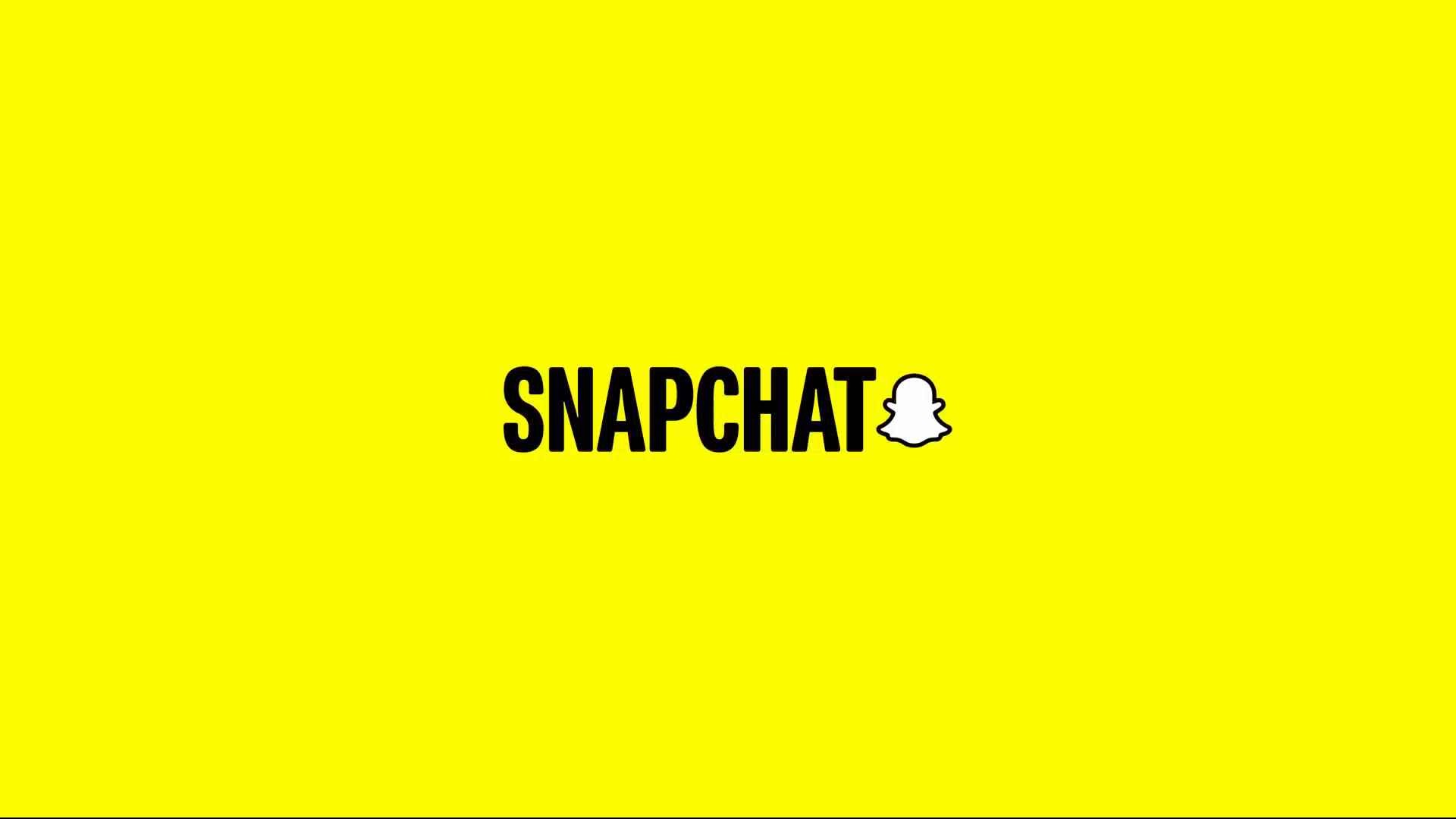Snapchat has always done things differently. While most social apps focus on likes, comments, and curated feeds, Snapchat built its success around moments that disappear – quick photos, videos, and messages that feel real and unfiltered.
Since launching in 2011, Snapchat has evolved from a fun messaging app into a massive platform that blends social connection, entertainment, and augmented reality. Today, it’s used by hundreds of millions of people every day and remains one of the most innovative and most downloaded apps in the social media space.
In this article, we’ll break down what Snapchat is, how it works, its user base, downloads, and how it turned its creative features into a billion-dollar business.
What Is Snapchat?
Snapchat is a multimedia messaging app best known for its disappearing photos and videos. It lets users share quick, personal moments through “Snaps” that vanish after viewing. Over time, it’s evolved into much more – a mix of messaging, entertainment, and augmented reality all in one app.
Today, Snapchat isn’t just about chatting with friends.
It’s also a place to discover creators, watch short-form videos, explore trending topics, and even experiment with AR filters and lenses that have become a pop culture staple.
How Does Snapchat Work?
When you open Snapchat, the camera launches instantly – it’s built for capturing the moment, not scrolling. You can take a photo or video, add filters, stickers, or text, and send it directly to friends or post it to your Story for 24 hours.
Snapchat’s Stories feature lets users share a series of Snaps that create a timeline of their day. The Discover tab highlights trending content from creators, publishers, and brands, while Memories stores Snaps users want to keep.
What makes Snapchat unique is how natural and fast it feels. It’s designed for real-time communication, not curated posts, which is why it’s still one of the most used apps among Gen Z and younger millennials.
Apps Like Snapchat
Apps similar to Snapchat include:
- Instagram – for Stories, Reels, and private messaging
- TikTok – for viral short-form videos
- BeReal – for authentic daily photo sharing
- WhatsApp – for visual chat and status updates
- Discord – for community-based sharing and media chat
Each platform takes a different spin on communication, but Snapchat’s focus on spontaneity and privacy keeps it one of a kind.
Who Created Snapchat?
Snapchat was created in 2011 by Evan Spiegel, Bobby Murphy, and Reggie Brown while they were students at Stanford University.
Their idea was simple but groundbreaking – a photo messaging app where images disappear after viewing, encouraging honest and playful communication.
Evan Spiegel and Bobby Murphy remain at the helm today, guiding Snapchat’s vision through their parent company, Snap Inc.
Who Owns Snapchat?
Snapchat is owned by Snap Inc., a publicly traded company listed on the New York Stock Exchange (SNAP).
Co-founders Evan Spiegel and Bobby Murphy still hold major shares and play key leadership roles, keeping the original vision intact while expanding into new areas like augmented reality, AI lenses, and wearables.
When Did Snapchat Come Out?
Snapchat first launched in July 2011 under the name Picaboo, before rebranding just months later. It quickly gained popularity among high school and college students thanks to its temporary photo-sharing concept – a refreshing contrast to the permanent posts of other social networks at the time.
Since then, Snapchat has evolved into a full social and entertainment platform with features like Stories, Spotlight, and Discover, while keeping its core focus on authentic communication.
How Much Is Snapchat Worth?
As of 2025, Snapchat’s parent company, Snap Inc., is valued at around $14.4 billion USD. The company reported $1.36 billion in quarterly revenue earlier this year, driven by advertising, AR innovation, and growing subscription revenue from Snapchat+.
While competition from TikTok and Instagram remains fierce, Snapchat’s ability to blend messaging, entertainment, and augmented reality keeps it highly valuable – both as a business and a cultural force.
Snapchat Users (2025)
Snapchat continues to be one of the most used social apps in the world, especially among younger audiences. Its focus on fast, visual communication and real-time interaction has helped it stay relevant even as new competitors enter the market.
Snapchat Daily Active Users
As of 2025, Snapchat has 444 million daily active users (AppMagic, 2025). That means nearly half a billion people open the app every single day to send Snaps, post Stories, or explore Spotlight.
This level of engagement shows how deeply Snapchat has become part of daily communication. Users don’t just open the app to browse – they open it to connect, share, and express themselves through photos, videos, and filters.
Snapchat Monthly Active Users
Snapchat’s monthly active users now total around 638 million globally (AppMagic, 2025). That’s a major milestone for an app that’s been around for more than a decade, proving its staying power in a fast-changing industry.
The app’s popularity remains strongest in North America and Europe, but growth in regions like India, Latin America, and Southeast Asia continues to accelerate. Snapchat’s mix of local-language content, region-specific AR lenses, and creative tools has helped expand its reach well beyond Western markets.
Snapchat’s ability to keep users engaged daily and globally speaks to its unique position – not just as a social network, but as a platform for self-expression and creativity that resonates across cultures.
How Many Downloads Does Snapchat Have?
Snapchat is one of the most downloaded apps in history, standing alongside global giants like TikTok and Instagram. Its mix of private messaging, creative filters, and short-form video keeps it consistently popular across age groups – especially among Gen Z.
As of 2025, Snapchat has surpassed 3.2 billion total downloads worldwide (AppMagic, 2025). That incredible number highlights just how embedded it has become in everyday communication.
Most downloads come from India (28%), followed by the United States (13%) and Brazil (5%) (AppMagic, 2025). India’s rapid smartphone adoption and Snapchat’s localization efforts have played a huge role in its recent growth.
Snapchat’s global success shows the power of visual communication. It’s not just another social media app – it’s a platform built around quick, expressive moments that appeal across cultures and languages.
Snapchat Ads & User Acquisition Strategy
Snapchat’s growth has always been driven by creativity – both in how it designs its product and how it attracts new users. Rather than relying solely on ads, Snapchat uses a mix of viral features, AR innovation, and localized marketing to keep its user base growing year after year.
Viral, Product-Led Growth
Snapchat’s product is its best marketing tool.
The app’s disappearing Snaps, Stories, and augmented reality lenses naturally encourage sharing. When users send a Snap with a fun filter or lens, they’re also spreading the app’s brand – every Snap becomes an ad in itself.
The app’s Snapcodes – scannable QR-style icons that connect users instantly – also help fuel word-of-mouth growth. They make it easy to add friends, unlock filters, and explore exclusive content. This kind of frictionless connection has been key to Snapchat’s viral expansion among younger audiences.
Advertising and Performance Marketing
Snapchat invests heavily in performance advertising across other social and digital platforms. These ads showcase new features like Spotlight videos or trending AR effects, sparking curiosity and downloads.
On the other side, its own ad products – like AR Lenses, Story Ads, and full-screen video ads – are some of the most engaging in the industry. They feel immersive, not intrusive. This design-first approach to advertising doesn’t just attract users; it attracts advertisers too, creating a strong acquisition loop.
Snap’s internal ad tracking system, Snap Pixel, allows precise targeting and retargeting, helping the company maximize conversion rates and retain users over time.
Influencer Collaborations and Brand Partnerships
Snapchat frequently collaborates with influencers and major brands to expand its reach. Creators often debut new lenses or AR challenges, which then spread across social media and draw new users to the app.
Global brands like Nike, Samsung, and Disney have run AR campaigns exclusive to Snapchat, merging entertainment and advertising in a way that feels fun rather than forced. This strategy has positioned Snapchat as a creative hub for both users and marketers.
Localization and Cultural Relevance
In newer markets like India, Brazil, and Southeast Asia, Snapchat’s growth has been powered by localized content. The app tailors lenses, filters, and events to fit cultural moments – from regional festivals to local trends – helping it feel more personal and relevant.
Features like Snap Map and Local Lenses also make the experience hyper-local, encouraging users to explore content based on their location and community.
Snapchat Revenue (2025)
Snapchat remains one of the top-grossing apps in the world, thanks to its powerful ad business and loyal user base. Even after more than a decade on the market, it continues to attract both daily users and major advertisers – a combination that keeps its revenue climbing steadily.
As of 2025, Snapchat’s total all-time in-app purchase revenue has surpassed $1.1 billion (AppMagic, 2025). That growth has been fueled primarily by the continued rollout of new monetization products like Snapchat+, its subscription service that gives users exclusive features and early access to updates.
The United States accounts for 43% of Snapchat’s total revenue, followed by the United Kingdom with 22% (AppMagic, 2025). These two markets remain Snapchat’s strongest, driven by high ad spend and strong engagement among younger demographics.
Snapchat’s consistent revenue performance shows how well it’s adapted to shifting digital trends. By blending messaging, AR, and entertainment, it’s managed to stay relevant – and profitable – in one of the most competitive spaces in tech.
How Does Snapchat Make Money?
Snapchat makes money through advertising, subscriptions, and creator monetization – with advertising still accounting for the majority of its revenue.
Over the years, the app has transformed from a simple photo-messaging tool into a full-fledged business platform.
Advertising
In-app advertising is the backbone of Snapchat’s business, making up about 96% of its total revenue. The app offers immersive ad formats that fit naturally into the user experience:
- Snap Ads are full-screen vertical videos that appear between Stories or in the Discover section. They’re short, engaging, and often include swipe-up actions to install an app or visit a website.
- Sponsored AR Lenses and Filters let brands design interactive experiences that users can play with and share. These campaigns generate massive organic reach because users often spread branded content themselves.
- Story Ads and Discover Ads appear alongside user-generated or publisher content, giving advertisers a way to reach audiences without disrupting the flow of content.
Snapchat’s ability to blend ads with creative tools – rather than forcing them into feeds – keeps engagement high and user sentiment positive.
Subscriptions
In 2022, Snapchat launched Snapchat+, a premium subscription that gives users access to exclusive features, early releases, and customization options. For $3.99 a month, subscribers can personalize their app experience and test experimental tools before anyone else.
While still a small portion of overall revenue, Snapchat+ has grown rapidly, with tens of millions of users paying for the added value. This shift toward recurring income has helped Snap diversify its revenue and reduce reliance on advertisers.
Creator Monetization
Snapchat also invests in creator programs to keep top talent on the platform. Through ad revenue sharing on Stories and Spotlight, creators can earn money based on their reach and engagement.
The company’s new unified monetization system rewards consistent creators – those posting frequently and maintaining at least 50,000 followers – helping Snapchat grow its ecosystem of influencers and original content.
Augmented Reality and Commerce
Snapchat defines itself as a camera company, and its focus on AR is a big part of its monetization strategy. With tools like Lens Studio, brands can create interactive AR ads, and users can try on products virtually through features like AR shopping lenses.
Snapchat’s AR technology isn’t just about fun – it’s commerce-driven. By merging entertainment with utility, Snapchat helps brands turn engagement into sales while giving users a genuinely enjoyable experience.
Final Thoughts
Snapchat’s journey proves that authenticity and innovation can coexist. By focusing on real-time communication instead of perfection, it created a culture of genuine connection that competitors still struggle to replicate.
Its mix of ephemeral content, viral AR tools, and immersive ad formats has made it both a creative playground and a serious business platform. Snapchat may not dominate every headline like TikTok or Instagram, but it continues to shape how people – especially younger generations – communicate and express themselves online.
With its expanding AR technology, subscription services, and global growth, Snapchat is positioned to remain one of the most influential social apps of the next decade.
Data Source
- AppMagic, 2025. App Data







Comments